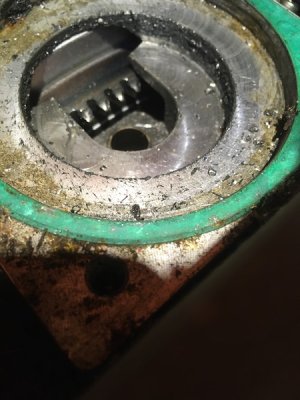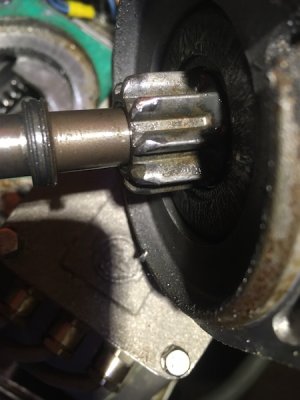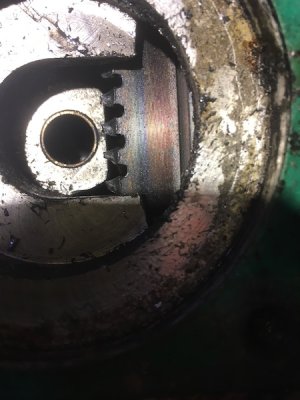Graham_Wright
Well-known member
The flywheel starter ring on my Fischer Panda is badly damaged and no longer serves to start the generator. I bought the genny for £800 with a declared fault which I have fixed.
(Perhaps the ring was damaged during repeated attempts to start the engine with too little battery power.)
For a little over the original purchase price, Fischer Panda can supply a new ring (just the ring) and a replacement starter motor (dog not available).
Ouch!
Fortunately, I have sourced a complete flywheel with a usable ring for considerably less.
The existing starter dog looks usable although I will try to source a replacement.
My question relates to the operating philosophy of the starter motor.
It is a pre-engaged type but the spindle turns, motor driven, during the throw-out. Is this normal? Is this to ensure that the unlikely but theoretically possible tooth to tooth collision is avoided?
Further investigation, reveals that, during throw-out the solenoid coil and the motor windings are in a series. This results in a fairly half-hearted rotation.
The solenoid contacts appear to be made at the limit of the throw-out.
The flywheel teeth are axial rather than radial which is a new one for me.
e


(Perhaps the ring was damaged during repeated attempts to start the engine with too little battery power.)
For a little over the original purchase price, Fischer Panda can supply a new ring (just the ring) and a replacement starter motor (dog not available).
Ouch!
Fortunately, I have sourced a complete flywheel with a usable ring for considerably less.
The existing starter dog looks usable although I will try to source a replacement.
My question relates to the operating philosophy of the starter motor.
It is a pre-engaged type but the spindle turns, motor driven, during the throw-out. Is this normal? Is this to ensure that the unlikely but theoretically possible tooth to tooth collision is avoided?
Further investigation, reveals that, during throw-out the solenoid coil and the motor windings are in a series. This results in a fairly half-hearted rotation.
The solenoid contacts appear to be made at the limit of the throw-out.
The flywheel teeth are axial rather than radial which is a new one for me.
e



Last edited:
